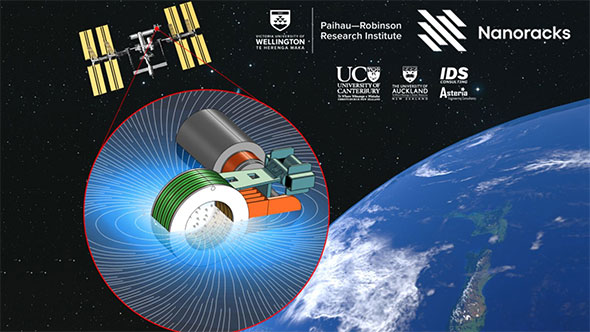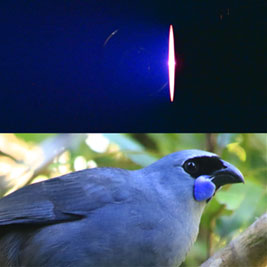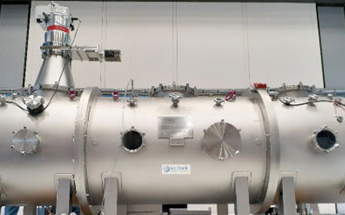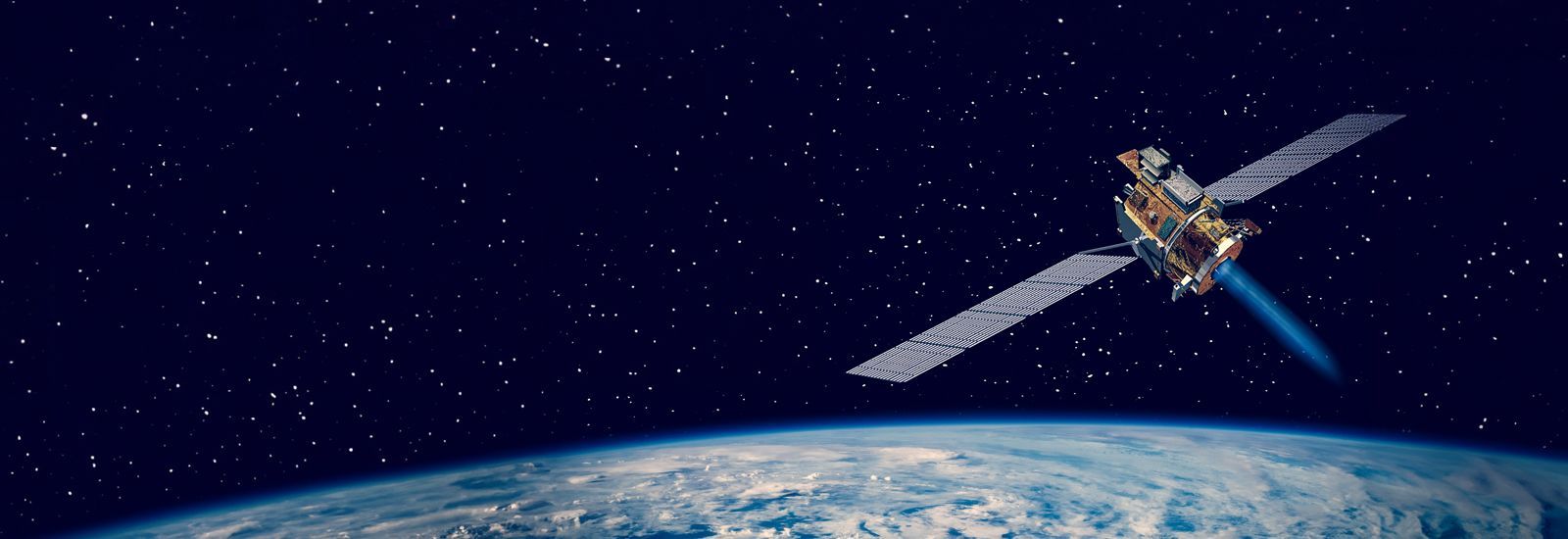Whether standard or special solutions, whether as part of a larger system or as a complete module - with its products and services, VAT supports groundbreaking worldwide research work with reliable high-precision valve technology. An excellent example of this is a current cooperation with the Paihau-Robinson Research Institute in New Zealand, which involves novel electric propulsion systems for spacecraft.

Novel HTS magnet and flux pump technology will soon be tested on the International Space Station (ISS). This same magnet system technology is being incorporated into a type of plasma-rocket called an applied-field magneto-plasmadynamic (AFMPD) thruster that can be used to propel large spacecraft.
Source: Victoria University of Wellington
Significant increase in performance
At the Paihau-Robinson Research Institute, high-temperature superconductivity (HTS) is being intensively researched. The Paihau-Robinson researchers are now making their in-depth HTS knowledge available for space applications, because HTS technology could be a valuable ingredient when it comes to significantly enhancing the performance and flexibility of so-called Applied Field Magneto-Plasmadynamic Thrusters (AFMPD).
To be able to investigate the effect of HTS magnets on the performance of AFMPD propulsion in detail, the Paihau-Robinson Research Institute has set up a space simulation chamber in collaboration with Australian scientific vacuum solution specialist, Scitek. A prototype of the thruster is being developed in the laboratory, with the HTS magnet part of the thruster to be taken to the International Space Station (ISS) and put through its paces in the vacuum of space.
High pumping capacity with steady gas flow
To be able to generate the required working pressure of about 10-7 mbar at an Argon gas flow of 100 sccm in the vacuum chamber, enormously high pumping rates of about 50,000 L/s are needed. This requires, among other things, a large roots pump, powerful turbomolecular pumps, and a 4,200 L/s cryogenic pump – but also special Meissner traps designed to directly pump the Argon gas from the plasma. For these Meissner traps to perform well, the residual moisture in the chamber must be minimized. This is one of the many reasons why Scitek trusts in reliable VAT high-precision valves, such as the VAT 11.1, 12.1, and 14.0 series gate valve and 24.4 series angle valves, for the vacuum components and their control.
Groundbreaking HTS research
The Paihau-Robinson Research Institute near Wellington, New Zealand, is world-renowned for pioneering research into high-temperature superconductivity. The Paihau-Robinson researchers' in-depth HTS knowledge will soon benefit space applications. Indeed, it turns out that HTS technology could make a valuable contribution to building more powerful magneto-plasmadynamic propulsion systems.
Magneto-what? Well, for spacecraft, there are chemical and electric propulsion systems. Chemical systems can provide spacecraft with high thrust, but they are very inefficient in terms of fuel consumption. In addition, due to the mass of the propellant, valuable available payload of the vehicle is lost. Electric systems, on the other hand, are more efficient, but their low thrust severely limits the responsiveness and maneuverability.
High thrust with MPD engines
Magneto-plasmadynamic thrusters (MPD) are a particularly interesting electric propulsion solution. This propulsion system is based on the principle of electromagnetic acceleration by the Lorentz force. It consists of an anode funnel and a rod-shaped cathode in the center. When an electrical voltage is applied, a gas – e.g., Argon, or Lithium – in the funnel is ionized (plasma), which allows a radial current to flow to the cathode. This current, in turn, generates a strong magnetic field that accelerates the ionized gas particles in the axial direction, thus providing the thrust for the vehicle.
A very high efficiency can be achieved with MPD technology, but this requires very strong magnetic fields. It has also been known for a long time that the performance and flexibility of MPD thrusters can be significantly improved if additional strong electromagnets are placed around the thrust module (external field accelerator). The technical term for this powerful type of thruster is Applied Field Magneto-Plasmadynamic Thruster, or AFMPD for short. But even these extra magnets consume a lot of power – and power is a real luxury in space! This is where the Paihau-Robinson Institute's HTS solutions come into play, since superconductor technology allows the power consumption of AFMPD magnets to be reduced enormously.
AFMPD thrusts for space applications
A suitable name for the innovative AFMPD project was quickly found: Kōkako, a bird native to New Zealand whose plumage is colored very similarly to the MPD’s Argon plasma beam. In terms of technical content, the Paihau-Robinson researchers are extending their skills into new territory, as Dr. Ben Mallett, senior scientist at the Paihau-Robinson Research Institute, reports: “We are all really excited to be leading such a pioneering project! We love solving hard science and engineering problems, and there are plenty now that we are building HTS systems for space. For example, until now, we have always had the opportunity to fix any issues encountered on the HTS systems we build. That’s not really an option here.”

Pretty much the same colors in the plasma beam (top) and in the bird's feathers (bottom) - this is why the Kōkako bird, native to New Zealand, gave its name to the new HTS-based AFMPD thruster.
Source: Ben Mallett, Paihau-Robinson Research Institute
As with all space applications, both the mass and the power requirements of the magnetic components are crucial when it comes to the attractiveness of the thruster for commercial applications. This is where the Paihau-Robinson researchers bring in all their expertise in HTS magnetic technologies to develop the lightest and most efficient thrusters possible. If the researchers' hopes are realized, the thrusters would be used to propel future heavy spacecraft – lowering and raising their orbits, or sending them to distant locations such as the moon, Mars and the asteroid belt.
Test facility for the AFMPD technology
To explore in detail how the strength and shape of the applied magnetic field affects the performance of the AFMPD thruster, the Paihau-Robinson researchers teamed up with the Australian company Scitek, a specialist in vacuum technologies and high-end thin film equipment. Kelvin Ho is the Product Manager for Space, Industry & Coating at Scitek, he handles their highly specialized space simulation chambers: "My role is to support our customers in their experiments, provide tailored solutions in vacuum optimization, and act as a subject matter expert on the different types of technologies used in vacuum pump systems.”
The ultimate goal of the cooperation between Scitek and the Paihau-Robinson Research Institute is clear: To commission a world-class electric thruster test facility and use it to advance AFMPD technology towards in-space application. As part of the later goal, Robinson and their New Zealand collaborators will de-risk the new applied-field module technology by demonstrating its operation in space! The closely related project is called Heki – the word for “egg” in the native language of New Zealand, since it will lead to Kokako taking flight.
Practical tests on the ISS
Through Heki, a flux-pumped superconducting magnet will be brought to the ISS space station by the U.S. hosted payload provider Nanoracks, and operated there on a test basis on the so-called Nanoracks External Platform. If all goes according to plan, the mission will impressively demonstrate the maturity of the HTS technology and the ability to operate these magnets within the electromagnetic interference requirements that might be expected by spacecraft.
The next step to take AFMPD into space is to accurately characterize their performance with the new HTS technology: "In the Scitek vacuum chambers, the conditions of space can be replicated, so that we can investigate on the ground, here in New Zealand, with fidelity how AFMPD is enhanced in the extremely high magnetic fields that can be generated by HTS magnets," explains Ben Mallett.
Impressive vacuum chamber
The results of the Paihau-Robinson-Scitek collaboration so far can be admired in Wellington: both the thruster module and the vacuum chamber are already operational, and all the associated vacuum pumps and valves have been automated.
The vacuum chamber used – with a length of 3 m and a diameter of 1 m – really is something special: "To simulate the conditions under which the thruster will later operate in space, a vacuum chamber in the range of 10-7 to 10-8 mbar is preferrable. But with a gas flow of 100 standard cubic centimeters of Argon, this is problematic," says Kelvin Ho, describing the tricky initial situation. "To maintain the 10-5 mbar vacuum often targeted in the electric propulsion field against the inflow of propellant from the thruster, the system needs a very high pumping rate of about 50,000 L/s."
Accordingly, the chamber uses a turbomolecular pump, a multi-stage roots vacuum pump, and a large 4,200-L/s cryogenic pump (DN400) for the Argon. In detail, the roots pump provides vacuum to rough out the chamber at an acceptable base pressure, before both the turbomolecular pump and the large cryo-pump can be used.
Meissner traps make the difference
But this alone cannot achieve the desired pumping speed. For this reason, the Paihau-Robinson researchers have been developing two additional so-called Meissner traps – large cooling plates whose temperature can be lowered enough to condense Argon gas released from the AFMPD during operation. Provided that they are ideally adapted to the plant setup, these traps can develop an enormous suction effect. Kelvin Ho says: "A single system can provide a pumping speed of 32,000 L/s for the vacuum chamber! And such large values are absolutely necessary to be able to generate the pump-down speed required for the thruster to operate smoothly."
Sounds great, but there is a problem: To capture the Argon efficiently, the Meissner traps must be operated at –253°C, just 20 degrees above the absolute zero of temperature! And because both the pumping speed and the thermal radiation absorbed correlate directly with the trap surface, the researchers have to carefully consider which plate surface area provides the best possible compromise between pumping speed and radiation heat load.
Residual moisture in the chamber
But this is not the only obstacle! Kelvin Ho names another challenge: "In order to develop their best possible effect, the Meissner traps must be as dry as possible. Accordingly, it is extremely important that we reduce the amount of residual water inside the chamber as much as possible before the Meissner traps start to cool." To complicate things further, this restriction, mind you, applies to a chamber in which a rocket propulsion system is to be tested, where the Argon gas to be processed contains relevant traces of water...
In this delicate balancing act, the Paihau-Robinson researchers rely on sustainable VAT valve technology because, as Kelvin Ho notes: "The decisive factor is the reliable interaction of all the vacuum valves involved!" The valves' disconnection and connection of the individual vacuum pumps follow a very precise choreography, which ensures that the conditions in the chamber always correspond to those in space - even when a rocket engine is switched on and off inside. "The high precision and functional reliability of VAT valves are crucial for such challenges," Kelvin Ho tells us happily. "In addition, we always work closely with our VAT colleagues when designing such systems. This is the only way to make the most of the experience of both sides."

Partial view of the test chamber at the Paihau-Robinson Research Institute. At the top left is the turbomolecular pump, which is connected to the chamber via a VAT series 11.1 gate valve.
Source: Ben Mallett (Paihau-Robinson Research Institute)
Trendsetting technology
Ben Mallett is confident that AFMPD thrusters will be propelling spacecraft to the moon, and back, within the next decade. "The work we are doing here will see a significant development of AFMPD technology. This is both about showing the new superconducting magnet system working in space, but also using excellent test facilities to show in a convincing way how AFMPD works with these new powerful magnets. These are key steps to taking these really cool plasma rockets into space!” Well then, VAT wishes a safe journey into the cosmos!
